Michael Waltrip Racing Shop Tour - Click above for high-res image gallery
From most vantage points, the drivetrain in the NASCAR Car of Tomorrow seems to have its origins somewhere just after the discovery of fire. Under the hood is a pushrod V8 with 350 cubic inches of displacement, using the same architecture first outlined in the early 1950s. In its current form, ye olde mill is now delivering somewhere between 800 and 900 horsepower, and the small-block is still fed by the same Holley 4150 carburetor anyone can pick up from the local parts store. Behind the engine is a similarly crude four-speed manual transmission built to take repeated abuse. And little else. It sends power to a Ford nine-inch rear end – a design which, compared to the engine, is brand-spanking new. It was introduced in 1957.
If we're talking weaponry metaphors, the average NASCAR racer is a Louisville slugger wrapped in barbed wire compared to the Predator drone of your average Formula One or WRC beater. Or at least it looks that way from a cursory glance. But make no mistake, this is still big dollar racing, and the teams lapping Charlotte Motor Speedway or Talladega are still doing everything in their power to beat the rules at every turn and make their car faster than the rest of the pack. That means dabbling in advanced metallurgy, fiddling with fluid dynamics and finding out how to make their 3,450-pound behemoth faster than their competitors with the same kit.
It's an odd crossroads that fuses new and old tech, and a recent trip to Michael Waltrip Racing had us checking our NASCAR prejudices at the door.
Photos by Zach Bowman / Copyright ©2010 Weblogs, Inc.
Tim Brown, the suspension manager for Michael Waltrip Racing, was kind enough to give us a brief behind-the-scenes tour of his team's Charlotte, NC shop. If you've ever found yourself sucked into an episode of The History Channel's Madhouse, Brown's name probably sounds familiar. When he's not working over the flexy bits for the Waltrip team, he's building and racing his own open-wheel modified car and starring in the reality TV show. The guy says he gets around two hours of sleep a night.
The easiest question to ask here is: Why do NASCAR teams continue to embrace technology that most of the motoring world has banished to the history books? The short answer is ease of enforcement. Once upon a time, manufacturers could run whatever hot mill they had laying around shop, but that resulted in a handful of teams running away with each race. In order to level the playing field, the NASCAR rule book was amended to only allow one driveline combination. That ridiculous curb weight was set at about the same time.
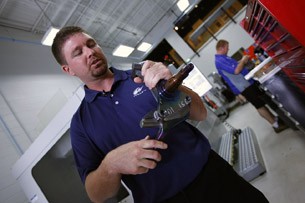
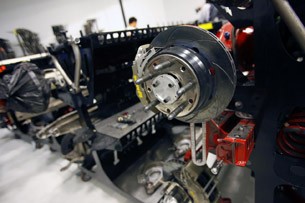
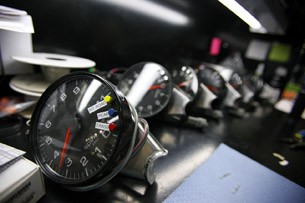
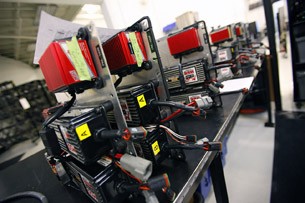
But the rules say the car has to weigh 3,450 pounds. They don't say where that weight can be positioned on the vehicle. Word has it that by regulation, each gearbox has to weigh 68 pounds, but there is no spec on each individual gear. It's been said that when some teams gets their gearboxes from Jasper, it immediately disassemble every last piece and trim weight where they can to reduce rotational mass. Tungsten then gets epoxied into the bottom of the case in order to make up the difference and get the weight as low to the ground as possible.
Four years ago, most of the cars on the track were using no more than 40 pounds of tungsten as ballast. Since then, that number has climbed to 400. That means that in the years between 2006 and 2010, engineers have managed to trim 360 lbs of weight from an otherwise "spec" chassis and lodge it closer to the ground. Rumor has it that teams have tried everything from reducing the sidewall width of steel tubing to slimming down the already paper-thin sheetmetal wrapped around the frame. Needless to say, NASCAR officials have gotten wise to most of the tricks and have resorted to using infrared sensors to determine the thickness of most materials on the car.
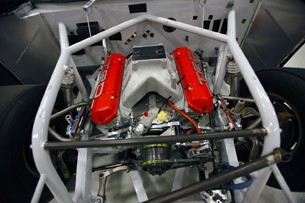
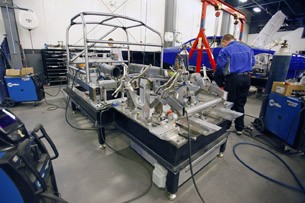
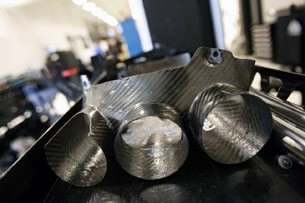
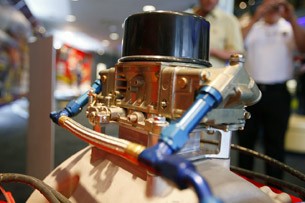
Likewise, most of the vehicle's non-spec components have been lightened until they can just barely stand the abuse of racing. The Michael Waltrip Racing shop is filled with rack after rack of replacement parts – hundreds of A-arms, spindles, and ring-and-pinion sets that have been built within microscopic tolerances. Some pieces, like those $2,200 ring-and-pinions, will only be used for one race before being scrapped. Everything else will be disassembled post-race and measured. Anything out of tolerance will be scrapped and replaced with a newly minted example.
Each team spends nearly as much time researching exactly which lubricants will stand up to the abuse of 500 miles at top speed. The Michael Waltrip Racing crew has stuck with the same Mobil 1 you can buy from your local Wal-Mart.
After Brown wrapped up the tour, we had the good fortune of speaking with Steve Hallam, Michael Waltrip Racing's vice president and director of competition. The guy cut his teeth with the old Lotus F1 team, and worked for years as McLaren F1's chief track engineer. Ask the guy what's so different between NASCAR and F1, and he'll politely tell you, "There's still a checkered flag at the end of the race."
Thanks to Mobil 1 for sponsoring Autoblog's visit to the Michael Waltrip Racing shop.
Photos by Zach Bowman / Copyright ©2010 Weblogs, Inc.
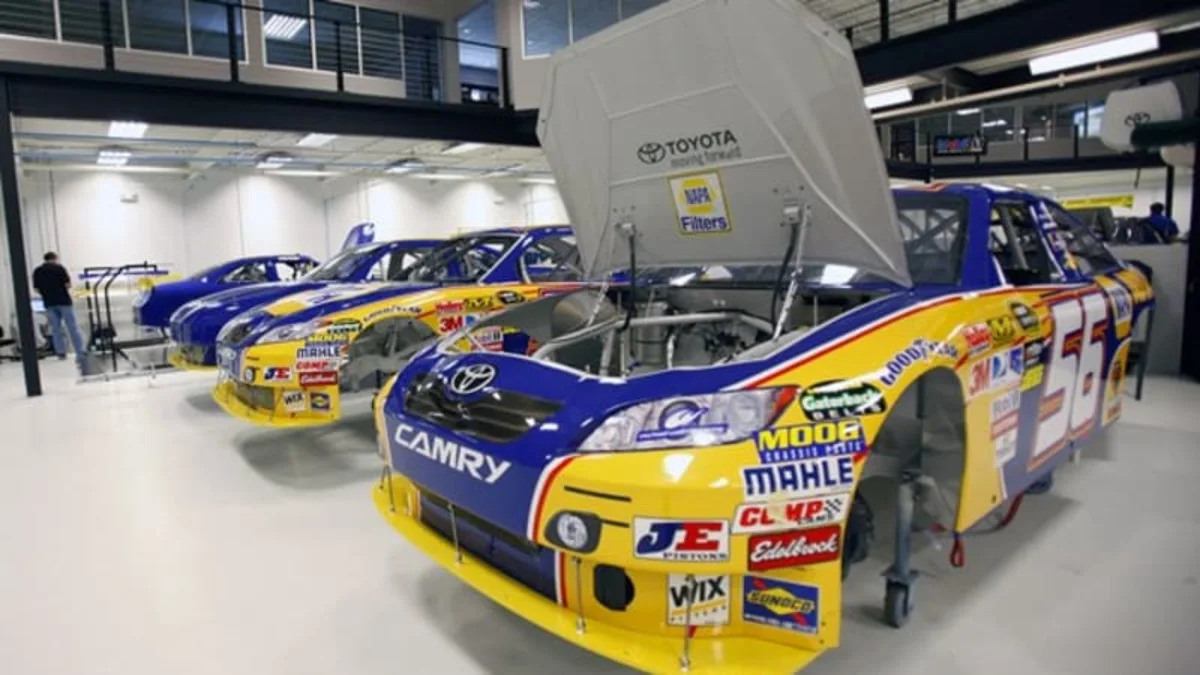


Sign in to post
Please sign in to leave a comment.
Continue